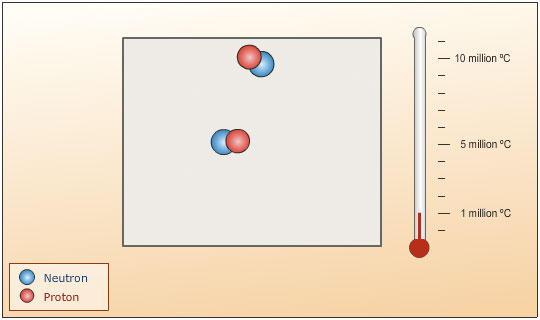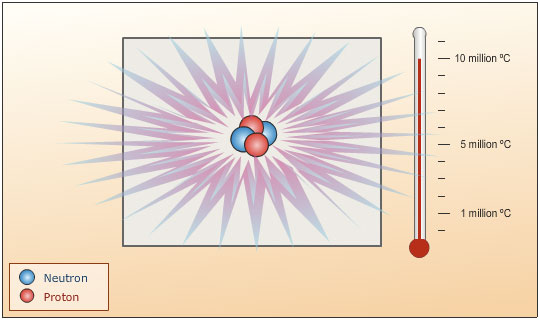What is Nuclear Fusion?
Nuclear fusion is the process in which the nuclei of light elements combine, or fuse together, to give heavier nuclei.
An example of a fusion reaction is that of two deuterium nuclei fusing together to give a helium nucleus. Deuterium is an isotope of hydrogen. The reaction is as follows:

Fusion reactions are accompanied by a much greater mass to energy conversion than in fission reactions.
Nuclear fusion requires extremely high temperatures. This is because the small nuclei require enough kinetic energy to overcome their electrostatic repulsion. The energy we receive from the sun is from nuclear fusion. The sun is made up mainly of hydrogen and helium. Within the sun the temperature is millions of degrees Celsius, there is the constant fusion of small nuclei into larger nuclei.
The animation below shows the mechanism of nuclear fusion.

Both nuclei contain 1 proton and 1 neutron. They carry a positive charge and repel each other. An increase in temperature increases the kinetic energy of the nuclei and they move around at increasing speeds.

At very high temperatures (millions of degrees Celsius) the kinetic energies of the nuclei overcome their forces of repulsion and collide. The collision results in the two Deuterium nuclei fusing to form a Helium nucleus along with a tremendous amount of energy.
